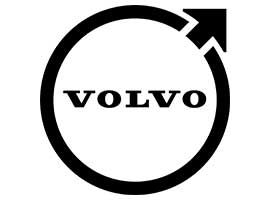During the Great ReCALIBRATION (aka the Great Resignation), 48 million people quit their jobs. People did not just quit and lay on the couch eating potato chips and streaming their favorite videos (okay, some of us did that for a brief time); they thought long and hard about how they wanted to work, who they wanted to work with, and how that work could be done.
Companies that want to survive today will need to understand today’s workforce expectations. This is what I call “The Entrepreneurial Spirit.” We have learned that employees:
- Want to be more selective of their working environment
- Expect to have a voice in providing ideas and suggestions to improve service and desired corporate outcomes
- Desire flexible work hours
- Seek growth, development, and advancement opportunities
- Understand the level of autonomy and initiative required to get the job done
I can tell you, “It’s not your grandpa’s workforce anymore!”
So, how does an organization adapt to fit employees’ changing needs? As I shared in my previous newsletter, I encourage leaders to utilize this philosophy moving forward:

“Make culture a strategy and it will find something else to eat for lunch” is a powerful phrase that highlights the importance of organizational culture in today’s fast-paced and ever-changing business landscape. For companies to stay competitive and thrive, leaders must overlay the strategic framework of cohesion: belonging, value, and shared commitment into their organizations and assess where they need to tweak their culture. When cohesion is present then employees feel a sense of belonging that translates to being included, are valued because what they do is meaningful, and share in mutual commitments through a collaborative mindset.
Leaders face the challenge of overcoming limitations they set upon themselves and their organizations whether intentional or not. It may be difficult to push past the status quo; YET, that is what’s required.
Given this age of “entrepreneurial spirit,” I’ve witnessed organizations receive a tremendous pushback as they ask all employees to return to the office after years spent effectively working from home. When questioned, these leaders acting out of good intentions believe that work is more effectively completed when individuals are face-to-face.
While there is an element of truth, according to research by Jack Flynn of Zippia, a job placement services company, 16% of U.S. companies are fully remote. Of all companies, remote or with hybrid options, just over 26% of U.S. workers perform from a remote location other then a corporate location. That trend will continue and during 2025, we will see 36.2 million American employees in a remote position.
Not surprisingly and consistent with other similar research, 40% of remote employees believe they are more productive than working in an in-person capacity. This may appear at first blush that the reactions of this group are biased. However, when looking at the data around company profits, companies increased profits in 2021 and more than 6.2% resulting from the first three quarters of 2022.
When leaders transition their thinking from treating culture as a tactic to a strategy, they are ready to think and react more holistically to the changing work environment and emerging employee needs.
Armed with this information, leaders must bridge the culture gap between workers in a corporate setting and those working remotely. Both sets of employees deserve all the rights and benefits of a healthy work environment.
“Culture is for all employees whether they work under the same roof or not.”
Not sure where to start? Then consider these four activities a good place to begin:
- Design job descriptions to fit the new roles within the organization. This includes adding commentary for work locations, flexible work hours, levels of autonomy and initiative, remote work boundaries and expectations, as well as education required and training and development opportunities provided by the organization. Job descriptions should not only be a list of tasks but a roadmap for employees to thrive in diverse work environments.
- Evaluate your supervisor training programs and upgrade as needed. These programs must include specific competencies that address managing, assessing, and promoting all workers through fair and equal opportunities. Today’s supervisors and team leads are ill-equipped to meet these demands without a formal training initiative in place. In other words, we must teach leaders how to effectively include all employees into the work culture while ensuring the supervisor-employee relationship is operating at its highest level. By investing in supervisor training, organizations can create a culture where inclusion, fairness, and opportunity are not just ideals but lived values. This approach not only benefits employees but also boosts morale, productivity, and the organization’s reputation as an inclusive and forward-thinking employer.
- Establish consistent treatment of employee growth, development, and advancement opportunities to remove the perceived (or actual) bias that promotions are more readily available for in-person workers. Upwards of 71% of employees want to be prepared and considered for the next growth opportunity. Not every employee is looking to be the next CEO. Instead, it’s important for them to learn and grow in meaningful and purposeful work. Organizations can not only eliminate the perception of bias but also create a culture that actively supports and encourages the growth and development of all employees. This not only fosters meaningful and purposeful work but also strengthens the organization’s talent retention efforts.
- Infuse cohesion into your work culture. Cohesion is a better predictor of behavior because it is a cause and effect phenomenon. When cohesion is present, then performance occurs every time. The level of performance is achieved due to a remarkable degree of employee engagement. This level of engagement generated through cohesion can account for up to a 50% increase in productivity and creativity. By infusing cohesion into your work culture, you not only enhance employee engagement but also unlock the potential for increased productivity and creativity. It’s a powerful driver of success that goes beyond physical work locations, creating a culture where all employees thrive and contribute their best.
Read more from Dr. Troy:
- 7 Ways Cohesion Prevents Burnout and Combats Disengagement
- Does Your Culture Excel in Truth, Doing & Simplicity?
- F.A.I.R. Play for Talent
For leadership principles that can be applied today, click here to subscribe to Cohesion Corner™ with Dr. Troy!
Interested in reading more from Dr. Troy Hall? Click here to check out my books available for purchase on Amazon!







